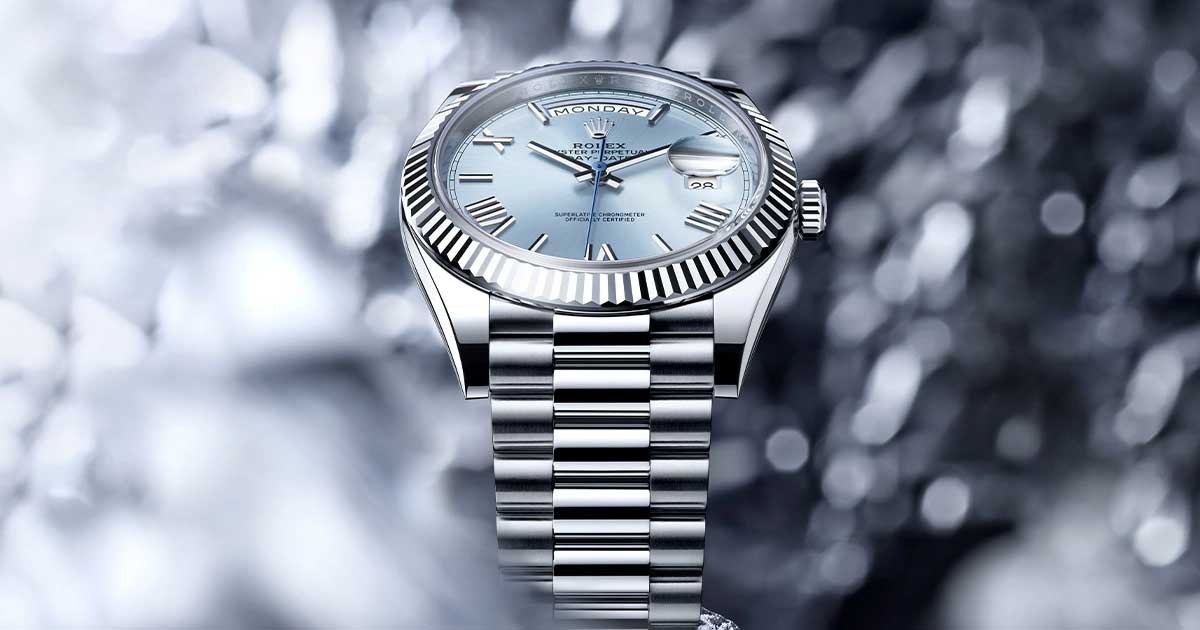Introduction
Rolex is one of the luxury names which is also associated with timeless elegance and precision. The brand has a rich history traced back over centuries to the present worldwide icon. It has not only evolved over time, but also it has blended classic and contemporary inventions.
In our article, we will explore the rich history of Rolex, a milestone that defines an era, and how the brand has married heritage and modernity to its limited edition and vintage treasures.
Rolex History; Milestone That Defines Era
Rolex was founded in 1905 by two friends, Alfred Davis and Hans Wilsdorf, based in London. Although these duos ideally specialized in making high-quality timepieces using Swiss movement, it only gave them unparalleled accuracy. After that, in 1908, Wilsdorf registered Rolex as the trademark, and as a result, they relocated to Geneva, Switzerland. Geneva is popular because of its profound watchmaking culture. The step laid a strong background for the establishment and success of this iconic Rolex brand.
Rolex watches have had a remarkable evolution from the vintage model through contemporary iterations to enthrall luxury enthusiasts. From the history of the emblematic models, we will be able to reveal groundbreaking designs and immutable innovations that highlight the brand as a horological icon on the market. The journey started in 1926 when Rolex introduced the first ever waterproof wristwatch, Oyster. It is a basic and important milestone achieved through the unwavering commitment to durability and functionality.
Another notable classic design milestone was the Rolex Oyster Perpetual in 1031. The watch featured a perpetual rotor and a first-of-a-kind self-winding wristwatch. Though understood, these early designs were classic highlights with their unique elegance, clean lines, and simplicity. This alone exemplified a commitment of the brand to precision and high quality with a strong background.
The evolution and innovation continue onwards to cement the reputation of Rolex for enthusiasts and divers. It became one of the staple aspects needed for underwater exploration. In 1955, there came GMT-Master, a basic and crucial timepiece for international pilots that featured the capability to show dual time zones.
The innovations in the mid-century ensured that models retained their classic and elegant design and incorporated modern features for experts. After that, Rolex timepieces became a symbol of innovation, precision, and reliability for different people around the world.
In the era of expansion, that is, the later half of the 20th century, there was diversification and expansion. Many iconic models were made. For professional race car drivers, Rolex launched Daytona in 1963, which was designed for them. It helped drivers measure a speed up to 400 km/h. again, Sea-Dweller was launched in 1967 with top-notch water resistance power up to 2k ft. Moving on, Rolex also introduced Explorer II in 1971 to serve adventurers as well as speleologists with a distinct 24-hour hand to separate day & night.
Rolex continued to expand its collection of designs and other luxury materials like gold, platinum etc.
Contemporary Rolex; Merging Heritage and Modernity
Rolex doesn't show any sign of slowing down. They are pushing envelopes with new innovation and commitment to quality, precision, and timeless designs. Today, Rolex is matching classic heritage contemporary designs with advanced technology. They have incorporated material science innovation to introduce timepieces that are extremely resistant to UV rays and scratches.
The company also pays attention to improving the accuracy of movement and performance. One of these contemporary Rolex creations is The Yacht-Master II, which is a stunning display of innovations. The Day-Date 40 is another uncompromising Elegance and precision. These features include the top-notch caliber 3255 movement introduced in 2015, exquisite dial, and unparalleled accuracy. These technical advancements have guaranteed resistance to magnetic fields and improved power reserves.
Today, these contemporary designs blend classic with the modern aesthetic of Submariner, Datejust, etc.; they all retain a timeless appeal. The company has also introduced Rolex Cellini. Rolex has just unearthed treasure with the limited edition and vintage miniature marvels. Some of these legendary designs are The Rolex GMT-Master II 'Batman' and The Cosmograph Daytona ‘Paul Newman'
Presuming the design evolution & technical advancement above, Rolex has posed an important impact on the popular heritage to give people fame, legendary status etc.
Conclusion
The incorporation of Rolex from classic to contemporary design is unwavering commitment and story that shows continuous dedication to quality, precision, innovation and timeless appeal. Rolex is still pushing boundaries in the watchmaking industry to meet the durability, precision, and styles of its customers. They have incorporated rich heritage with modern innovation to secure their place as the market leader in luxury watch production.




